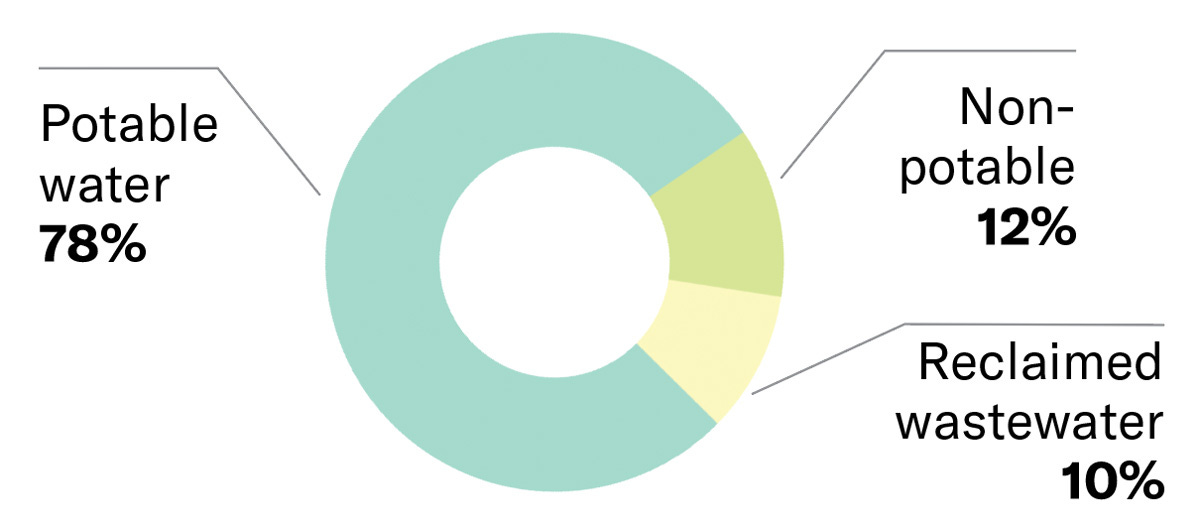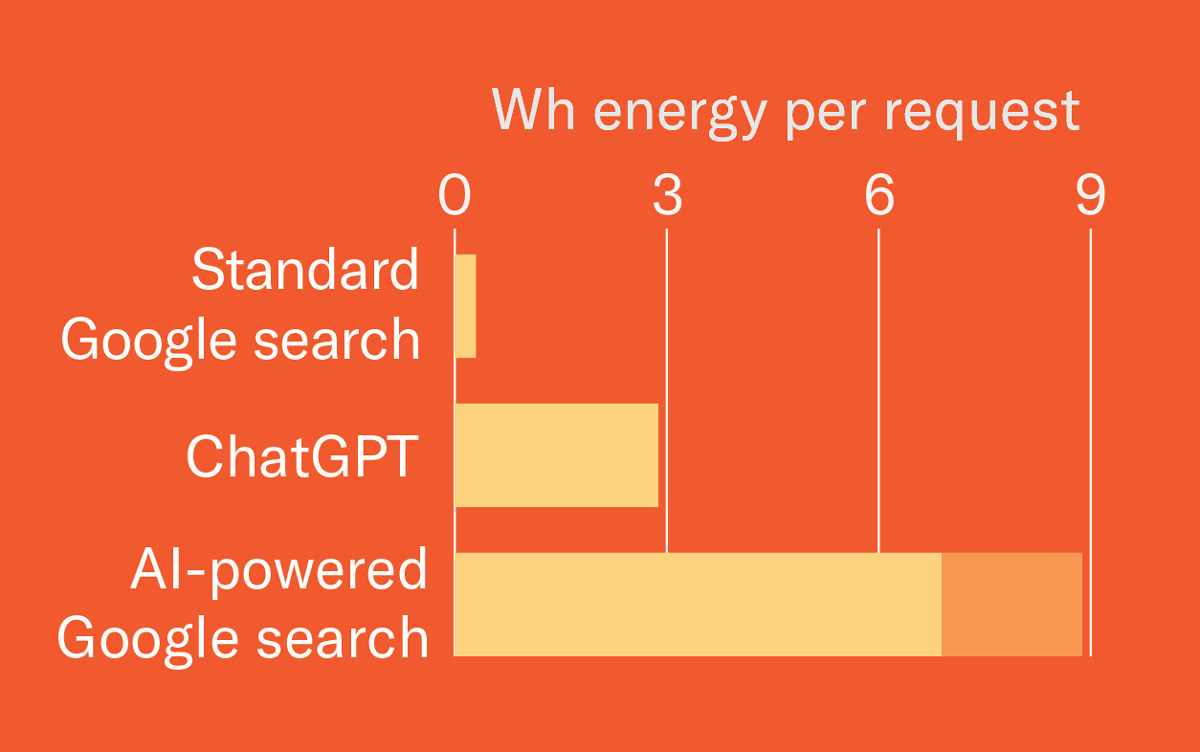DAILY TRIFECTA: Donald's Inferno
EPAin't what it used to be
Today, Trump and what’s left of the EPA are officially consigning every living thing on this planet to a superheated future. It’s the capstone on a months-long effort to expunge climate change from every corner of the federal government. In fact, he’s already effectively eliminated the issue from political discourse. It happened within the first week of his second administration. No one dared to bring up climate change during his visits to Hurricane Helene-affected North Carolina and to the weather-whiplashed fire victims of Los Angeles.
Instead, Trump floated the idea of eliminating FEMA in flood-stricken North Carolina and then trumped-up a phony controversy about California’s water management system in LA. But he was never confronted with his dismissal of climate science, nor was he questioned about his climate polluting agenda. It was as if he’d made the issue disappear into thin air. That moratorium still persists to this day. He’s attacked anything and everything associated with climate … from his grudge against windmills to his enthusiasm for hyper-scaling pollution-generating data centers … the issue of anthropogenic climate change has been verboten wherever he goes.
It certainly didn’t come up during his visit to the deadly flood in Texas. And although he’s giving one-to-two press availabilities every weekday, I’ve yet to hear one question about his government’s attack on climate science, let alone on the entire renewable energy sector.
Nada. Nothing. Zippo.
Now we get this new move to, as the NY Times headline put it, “Kill a Bedrock Scientific Finding.” It’s not often that “bedrock” science is “killed.”
But here we are.
It’s notable that it comes as a massive, deadly heatdome is driving temperatures to new highs across a wide swathe of the country. The heatwave has also produced some of that extreme weather this nation of boiling frogs has apparently grown accustomed to … or, perhaps, they are simply indifferent to it. Indifference seems like quite a luxury given the “soaring” annual price-tag of climate-related disasters.
Instead, the EPA’s new draft rule “strikes at the heart of its own authority to regulate climate pollution.” As E&E News explains, they will simply stop thinking of climate change as dangerous:
The endangerment finding provided the legal bases for those vehicle climate regulations — as well as rules to limit climate pollution from fossil fuel power plants and gas wells.
The 2009 finding holds that heat-trapping emissions endanger public health and welfare by driving climate change. The Trump administration’s ambitious bid to remove it aims to make similar regulations more difficult — or even impossible — in the future, taking EPA out of the business of addressing climate pollution unless Congress passes a new law.
In other words, they will wave their hands, say “this is not the finding you are looking for” and “move along” to the next order of business, which is to pump even more pollution into the skies:
The draft rule to upend the so-called endangerment finding will be released jointly with the proposed reversal of Biden-era tailpipe emissions rules for light-, medium- and heavy-duty cars and trucks. The latter proposal may focus only on rescinding the limits for carbon emissions and not criteria pollutants.
Although they have a variety of possible angles for the coming court battle, E&E notes their confidence in a Supreme Court that’s been carefully curated to kowtow to polluting industries:
“What they hope for is a binding legal outcome that would preclude, either explicitly or effectively, future regulation of greenhouse gasses under the Clean Air Act,” said Joe Goffman, former President Joe Biden’s EPA air chief, at a briefing last week.
They are specifically poised to attack both the statutory predicate for using the finding and the finding itself:
The section of the Clean Air Act that the Obama EPA relied on in writing the original finding, the summary said, “does not authorize the EPA to prescribe emission standards to address global climate change concerns.”
The passage goes on to provide an even bolder “alternative” argument that the Obama administration “unreasonably analyzed the scientific record” and that EPA has ignored scientific developments in the years since that “cast significant doubt on the reliability of the findings.”
Of course, the only “doubt” that’s ever been “cast” comes from a small cadre of professional contrarians who, in a strange coincidence, often seem to be funded by the fossil fuel industry. Three of these skeptics were recently added to Trump’s Energy Department and, The New York Times reported, the Trump Administration has also been “recruiting scientists to help them repeal the 2009 ‘endangerment finding,’ which determined that greenhouse gases pose a threat to public health and welfare….”
It’s that last bit where the Jedi Mind Trick gives way to the Orwellian mindfuck. Look at the closing language of the proposal, as cited by E&E News:
“Lastly, we propose to repeal all [greenhouse gas] emission standards on the alternative basis that no requisite technology for vehicle and engine emission control can address the global climate change concerns identified in the findings without risking greater harms to public health and welfare.”
They must’ve marveled at their cleverness when they flipped the “threat to public health and welfare” from greenhouse gases into a risk of “greater harms to public health and welfare” from regulating greenhouse gas emissions!
The idea that curtailing greenhouse gases puts public health and welfare at risk is really just trolling … pure and simple. But it is also very much on-brand and, in fact, one of the reasons they’ve secured the power to guarantee this century is going to be hot as Hell.
Let’s face it, although China may have pulled ahead in total emissions, the future of the climate is largely in Uncle Sam’s hands. The US has to lead on the issue for the world to have any chance at mitigating the intensity and duration of what humanity has already baked into the cake. That’s to say nothing for avoiding piling a couple more carbon-filled layers on top of it.
Alas, Trump’s 180 degree direction change on all climate-related issues and his moves to cripple the renewables industry is only half the problem … because he’s merged US policy with the energy-sucking dreams of Silicon Valley’s artificial intelligence industry.
They’ve got the greenlight to turn hydrocarbons into an endless array of profit-generating A.I. agents, and when that’s coupled with the end of America’s decidedly modest efforts to curtail climate pollution … it sure looks like Trump has committed the world to a superheated future. And yes, a lot of Americans did “vote for this.” - jp
TITLE: Coal- and gas-fired power plants have a new best friend: data centers
https://www.utilitydive.com/news/fossil-fuel-gas-coal-climate-data-centers/753565/
EXCERPTS: In 2020, the Virginia Assembly passed the Virginia Clean Economy Act, a law that required the state’s largest utility, Dominion Energy, to generate all its electricity from renewable resources by 2045. However, Dominion has found a useful loophole to get around the law’s requirements — data centers.
Viriginia hosts the largest data center market in the world, and is home to at least 150 hyperscale data centers, with more being proposed. In its recent integrated resource plan, Dominion cited projected energy demand from these data centers as a key reason to delay retiring existing power plants, including the Clover Power Station, a coal-powered peaker plant in Halifax County, a disproportionately low-income region.
In addition to delaying peaker retirements, Dominion has proposed building new gas-powered generation, including a 1-GW peaker plant in Chesterfield, a community that already shoulders an undue environmental burden from existing natural gas- and coal-fired generation.
Similar stories have played out across the country as data centers become more and more ubiquitous, particularly in the Southeast. Utilities in Virginia, Georgia, North Carolina and South Carolina have proposed building 20,000 MW of new gas power plants by 2040. Data centers driving the projected load growth are being used to justify this buildout. In Virginia, Georgia and South Carolina, data centers are responsible for at least 65% of projected load growth.
Data centers are also delaying the retirement of fossil fuel power plants nationwide, with at least 17 fossil fuel generators originally scheduled for closure now delaying retirement. This new gas buildout, as well as the delayed retirement of fossil fuel generators, overwhelmingly harms Black and brown communities, who face higher energy and environmental burdens.
TITLE: Cheyenne to host massive AI data center using more electricity than all Wyoming homes combined
https://apnews.com/article/ai-artificial-intelligence-data-center-electricity-wyoming-cheyenne-44da7974e2d942acd8bf003ebe2e855a
EXCERPTS: An artificial intelligence data center that would use more electricity than every home in Wyoming combined before expanding to as much as five times that size will be built soon near Cheyenne, according to the city’s mayor.
“It’s a game changer. It’s huge,” Mayor Patrick Collins said Monday.
With cool weather — good for keeping computer temperatures down — and an abundance of inexpensive electricity from a top energy-producing state, Wyoming’s capital has become a hub of computing power.
The city has been home to Microsoft data centers since 2012. An $800 million data center announced last year by Facebook parent company Meta Platforms is nearing completion, Collins said.
The latest data center, a joint effort between regional energy infrastructure company Tallgrass and AI data center developer Crusoe, would begin at 1.8 gigawatts of electricity and be scalable to 10 gigawatts, according to a joint company statement.
A gigawatt can power as many as 1 million homes. But that’s more homes than Wyoming has people. The least populated state, Wyoming, has about 590,000 people.
And it’s a major exporter of energy. A top producer of coal, oil and gas, Wyoming ranks behind only Texas, New Mexico and Pennsylvania as a top net energy-producing state, according to the U.S. Energy Information Administration.
Accounting for fossil fuels, Wyoming produces about 12 times more energy than it consumes. The state exports almost three-fifths of the electricity it produces, according to the EIA.
But this proposed data center is so big, it would have its own dedicated energy from gas generation and renewable sources, according to Collins and company officials.
Gov. Mark Gordon praised the project’s value to the state’s gas industry.
“This is exciting news for Wyoming and for Wyoming natural gas producers,” Gordon said in the statement.
While data centers are energy-hungry, experts say companies can help reduce their effect on the climate by powering them with renewable energy rather than fossil fuels. Even so, electricity customers might see their bills increase as utilities plan for massive data projects on the grid.
TITLE: The West’s data centers suck (water and power)
https://www.hcn.org/issues/57-8/the-wests-data-centers-suck-water-and-power/
EXCERPTS: Thirsty data centers are sprouting like weeds in parts of the West that are already arid and now gripped by severe drought. In the greater Phoenix area, proposed housing developments have died due to a lack of available groundwater. Yet data centers, each of which can consume an entire sprawling subdivision’s worth, face no such requirements or water restrictions.
Data centers use energy to run their servers, and energy and water to cool the processors. Evaporative chillers that work in low humidity use less energy but more water, while refrigerated cooling uses less water but requires more energy on-site. And power generation generally guzzles water, too, thereby increasing data centers’ indirect water use.
Most of the water used by Google’s data centers in 2023 was drinkable.
Google’s data centers withdrew 8.65 billion gallons of water in 2023 worldwide. Meta’s withdrew 1.39 billion.
Comparing data’s hunger for energy and water
AI-powered search models use 10 times more energy than a standard Google search.
Data centers need water for cooling, and because AI-processing facilities work harder, they need more cooling and even more water.
TIP: include “-ai” after your Google search terms to exclude Al-powered results




